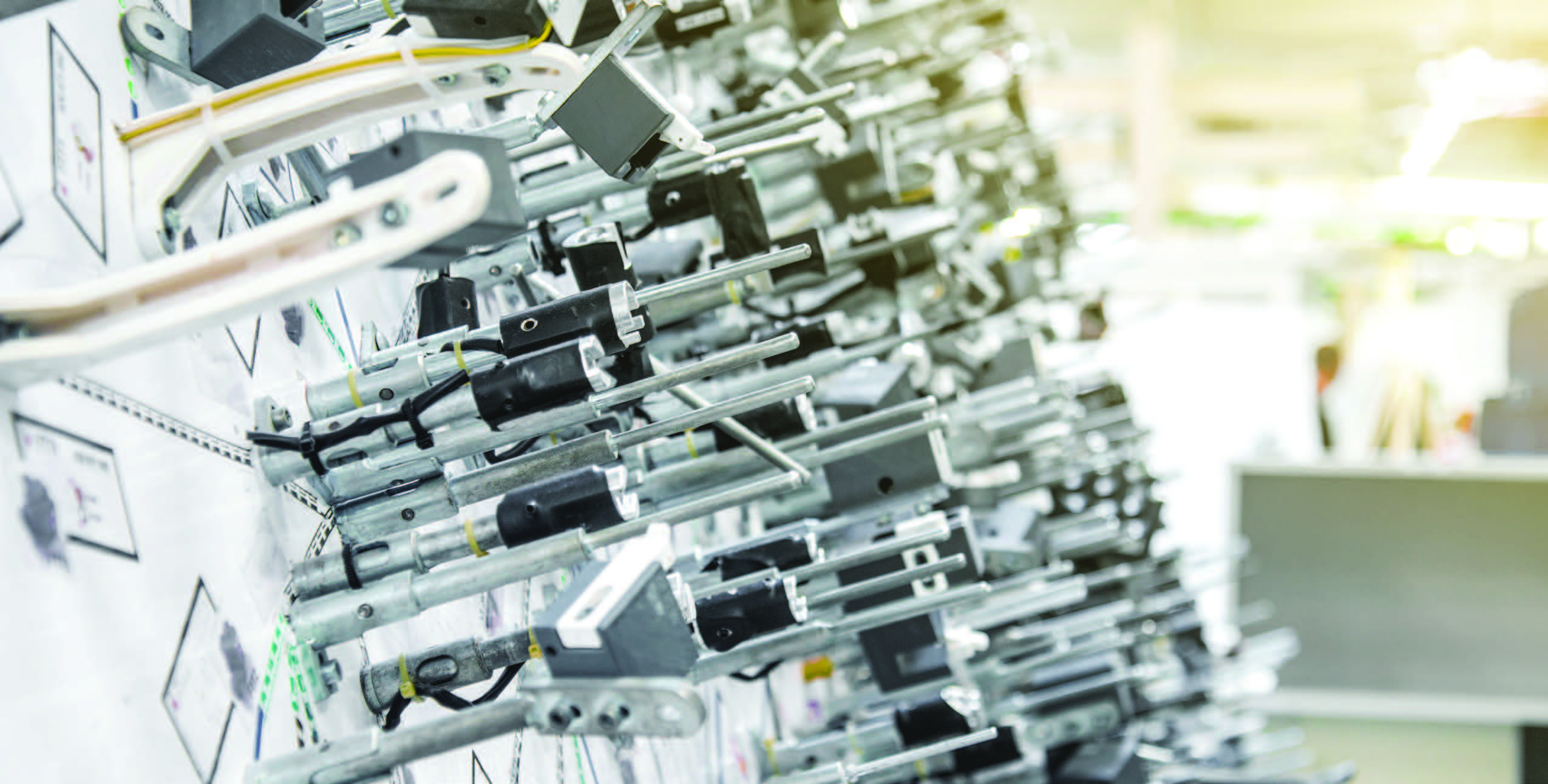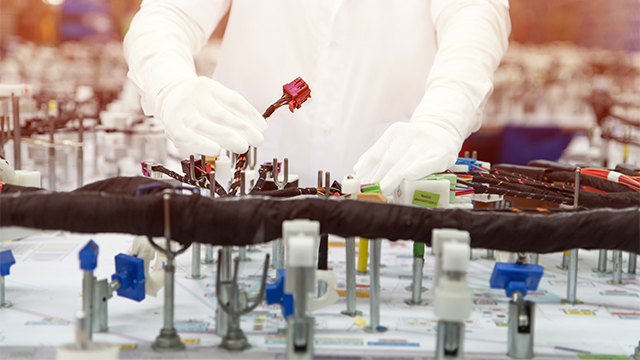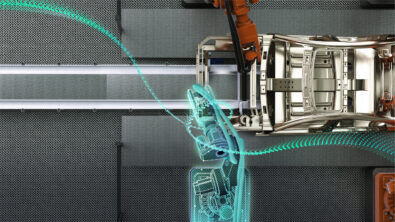Optimize advanced wire harness manufacturing with a KSK solution

The continually evolving automotive industry faces multiple challenges that place great emphasis on wire harnesses. The demand for electrification, autonomous driving, advanced electronic features, and advanced driver-assistance systems (ADAS) will require highly sophisticated automotive electric and electronic (E/E) systems. Additionally, a surge in demand for mass customization raises the number of unique vehicle configurations, further increasing harness complexity. In order to meet these demands, the automotive industry will need a solution for efficiently optimizing wire harness manufacturing.
Wire harness assembly breakdown
A vehicle’s wiring system is a complex assembly composed of multiple wire harnesses that connect all the electric and electronic (E/E) system components to transmit power and signals between actuators, sensors, and electronic control units (ECUs). These systems range from air-conditioning, in-vehicle infotainment (IVI) systems, and automated features to ECUs that manage braking, steering, and throttle control. Due to its complexity, a typical wiring system can easily contain up to 10,000 individual part numbers.
Modern wiring systems are designed to support an incredible number of configurations. As automakers incorporate new and more advanced vehicle features, wiring systems are growing in complexity and variety due to the level of customization available. Manufacturers must accommodate all possible vehicle configurations, which can be constructed in millions of combinations, while meeting very tight timelines, following precise quality requirements, and minimizing the harness’s cost and weight.

Common approaches to wire harness manufacturing
A significant challenge for automotive original equipment manufacturers (OEMs) and harness manufacturers is managing complex wire harnesses effectively from design and engineering to manufacturing and delivery. There are three common approaches to wire harness manufacturing used today:
- Standard: Designed with only one variant of each harness type and has one part number per type
- Variant: Designed with multiple variants of each harness type and has multiple part numbers per type
- KSK: Manufactured according to an individual list of modules and has an individual part number
Each of these approaches comes with tradeoffs in content give-away, which refers to unused harness material in the car, and complexity, which refers to the number of variants produced from one harness family. Standard has high give-away but low complexity, variant has low give-away, and KSK, the most desired solution, has zero give-away but high complexity.
What is KSK manufacturing?
The German term Kundenspezifischer Kabelsatz (KSK) translates to customer-specific wire harnesses. Over the last 25 years, KSK has grown to be highly successful, expanding globally to all car categories and harness types due to its high efficiency and flexibility, controlled logistics, and planning, leading to a unique product. This method also introduces an unlimited number of variants, controlled logistics with optimal work-in-progress (WIP), a flexible sales strategy, a modifiable production program, modular change management, and the final customer can change the car content according to the logistics window. And with a zero give-away, it is the most sustainable solution that allows you to produce what you need with no wasted materials.
While this concept is already proven in the industry, traditional KSK data assimilation approaches could soon become irrelevant as harness manufacturers undergo digital transformation. Due to its complexity, KSK requires strong communication, data coherency and a robust data flow between disciplines from the request for quotation (RFQ) stages to production. The critical success factor in this business for harness manufacturers is to eliminate silos between all major business disciplines for a successful KSK manufacturing model/system.

